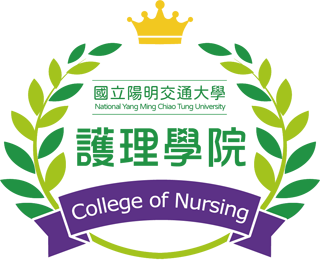Honors
AWARDS
05
2024.03
Teacher Awards and Honors
2024 First Quarter Significant Journal Articles of National Yang Ming Chiao Tung University
Title:
Effects of early warm water sitz bath on urinary retention and pain after haemorrhoidectomy: A randomized controlled trial.
Journal:
International Journal of Nursing Studies
Author:
Department of nursing
Professor Huey Lan Sophia Hu
Abstract:
Background: Haemorrhoids are a common chronic anorectal disease, and haemorrhoidectomy is the standard treatment for advanced (grade III and IV) haemorrhoids. Warm water sitz has commonly been used to stimulate urination, cleanse wounds, and decrease pain. Although urinary retention and pain usually occur within the first 24 h after surgery, the warm water sitz bath is provided 24 h after haemorrhoidectomy, which might be a missed opportunity to optimize the quality and efficiency of the care provided.
Objective: To investigate the effect of early warm water sitz bath on the day of haemorrhoidectomy surgery on preventing urinary retention and reducing wound pain.
Design: This was a longitudinal double-blind study with a permuted block randomization design.
Setting(s): This study was conducted in a surgical ward of a medical center. An average of 18 patients receiving hemorrhoid surgery in that ward every month.
Participants: A total of 64 participants (32 each in the experimental and control groups) were enrolled. (The first recruitment date is January 16, 2020.) METHODS: Patients who received haemorrhoidectomy for grade III or IV haemorrhoids from January to December 2020 were enrolled. The experimental and control groups received the same conventional treatment and care before the haemorrhoidectomy. The experimental group started warm-water sitz bath 6 h after the surgery, and the control group started warm water sitz bath on post-haemorrhoidectomy day 1 as usual. Urinary retention was defined as use of Foley catheter during the hospital stay or remaining urine volume ≧ 300 ml using the bladder scan. A numerical rating scale was used to rate the pain level. Each participant was evaluated 6 times in total until hospital discharge. The data were analysed by descriptive statistics, chi-square test, and independent samples t test. Generalized estimating equations and intention to treat were used to identify changes in urinary retention and pain over time and missing data, respectively.
Results: There was no significant difference in the degree of change in the number of people with urinary retention between groups. A change in the wound pain index was noted; the study group had a statistically significant lower pain score than the control group (B = -0.81, 95 % CI: -1.44 to -0.18).
Conclusions: Early warm water sitz bath was a safe and effective strategy to decrease post-haemorrhoidectomy pain, but not urinary retention. Nurses could provide early warm water sitz bath for post-haemorrhoidectomy patients' comfort.

Title:
Organizational culture and trust affect the Team-Based practice and job satisfaction of nurse practitioners in acute care hospitals: A national survey
Journal:
Journal of Nursing Management
Author:
Chairperson, Department of Nursing
Distinguished Professor Heng-Hsin Tung
Abstract:
1. Background: The link between organizational culture, organizational trust, job satisfaction, and team-based practice among nurse practitioners (NPs) has not been examined simultaneously.
2. Purpose: To identify the effects of organizational culture, organizational trust, and other factors on NPs such as job satisfaction and team-based practice.
3. Findings: Organizational culture and organizational trust affect the job satisfaction and team-based practice of NPs in acute care practices. Implications for Nursing Management. Acute care hospitals are encouraged to develop policies to enhance a learning environment, a supportive organizational culture, and trust in NPs’ practice.
and the organizational culture and trust were positively associated with higher job satisfaction, which accounted for 49.2% of the variance in NPs’ job satisfaction. Organizational trust, commitment to the organization, and learning environment promoted better team- based practice significantly. Also, NPs working a fixed shift pattern showed higher levels of team-based practice. These factors accounted for 23.66% of variances in team-based practice.
4. Results: A learning environment, psychological safety, senior leadership support, commitment to the organization, and the organizational culture and trust were positively associated with higher job satisfaction, which accounted for 49.2% of the variance in NPs’ job satisfaction. Organizational trust, commitment to the organization, and learning environment promoted better team-based practice significantly. Also, NPs working a fixed shift pattern showed higher levels of team-based practice. These factors accounted for 23.66% of variances in team-based practice.
5. Methods: We used a cross-sectional design with a national sample. Data were collected using an online survey of 1,100 NPs working in acute care settings. The survey included demographic and working characteristics, the Organizational Culture Scale, the Organizational Trust Scale, the Misener Nurse Practitioner Job Satisfaction Scale (MNPJSS), and the NP-physician relations (NP-PR) subscale of the Nurse Practitioner Primary Care Organizational Climate (NP- PCOCQ). Multiple regression analysis with a stepwise selection method explored potential factors that influence job satisfaction and team-based practice.

Effects of early warm water sitz bath on urinary retention and pain after haemorrhoidectomy: A randomized controlled trial.
Journal:
International Journal of Nursing Studies
Author:
Department of nursing
Professor Huey Lan Sophia Hu
Abstract:
Background: Haemorrhoids are a common chronic anorectal disease, and haemorrhoidectomy is the standard treatment for advanced (grade III and IV) haemorrhoids. Warm water sitz has commonly been used to stimulate urination, cleanse wounds, and decrease pain. Although urinary retention and pain usually occur within the first 24 h after surgery, the warm water sitz bath is provided 24 h after haemorrhoidectomy, which might be a missed opportunity to optimize the quality and efficiency of the care provided.
Objective: To investigate the effect of early warm water sitz bath on the day of haemorrhoidectomy surgery on preventing urinary retention and reducing wound pain.
Design: This was a longitudinal double-blind study with a permuted block randomization design.
Setting(s): This study was conducted in a surgical ward of a medical center. An average of 18 patients receiving hemorrhoid surgery in that ward every month.
Participants: A total of 64 participants (32 each in the experimental and control groups) were enrolled. (The first recruitment date is January 16, 2020.) METHODS: Patients who received haemorrhoidectomy for grade III or IV haemorrhoids from January to December 2020 were enrolled. The experimental and control groups received the same conventional treatment and care before the haemorrhoidectomy. The experimental group started warm-water sitz bath 6 h after the surgery, and the control group started warm water sitz bath on post-haemorrhoidectomy day 1 as usual. Urinary retention was defined as use of Foley catheter during the hospital stay or remaining urine volume ≧ 300 ml using the bladder scan. A numerical rating scale was used to rate the pain level. Each participant was evaluated 6 times in total until hospital discharge. The data were analysed by descriptive statistics, chi-square test, and independent samples t test. Generalized estimating equations and intention to treat were used to identify changes in urinary retention and pain over time and missing data, respectively.
Results: There was no significant difference in the degree of change in the number of people with urinary retention between groups. A change in the wound pain index was noted; the study group had a statistically significant lower pain score than the control group (B = -0.81, 95 % CI: -1.44 to -0.18).
Conclusions: Early warm water sitz bath was a safe and effective strategy to decrease post-haemorrhoidectomy pain, but not urinary retention. Nurses could provide early warm water sitz bath for post-haemorrhoidectomy patients' comfort.

Title:
Organizational culture and trust affect the Team-Based practice and job satisfaction of nurse practitioners in acute care hospitals: A national survey
Journal:
Journal of Nursing Management
Author:
Chairperson, Department of Nursing
Distinguished Professor Heng-Hsin Tung
Abstract:
1. Background: The link between organizational culture, organizational trust, job satisfaction, and team-based practice among nurse practitioners (NPs) has not been examined simultaneously.
2. Purpose: To identify the effects of organizational culture, organizational trust, and other factors on NPs such as job satisfaction and team-based practice.
3. Findings: Organizational culture and organizational trust affect the job satisfaction and team-based practice of NPs in acute care practices. Implications for Nursing Management. Acute care hospitals are encouraged to develop policies to enhance a learning environment, a supportive organizational culture, and trust in NPs’ practice.
and the organizational culture and trust were positively associated with higher job satisfaction, which accounted for 49.2% of the variance in NPs’ job satisfaction. Organizational trust, commitment to the organization, and learning environment promoted better team- based practice significantly. Also, NPs working a fixed shift pattern showed higher levels of team-based practice. These factors accounted for 23.66% of variances in team-based practice.
4. Results: A learning environment, psychological safety, senior leadership support, commitment to the organization, and the organizational culture and trust were positively associated with higher job satisfaction, which accounted for 49.2% of the variance in NPs’ job satisfaction. Organizational trust, commitment to the organization, and learning environment promoted better team-based practice significantly. Also, NPs working a fixed shift pattern showed higher levels of team-based practice. These factors accounted for 23.66% of variances in team-based practice.
5. Methods: We used a cross-sectional design with a national sample. Data were collected using an online survey of 1,100 NPs working in acute care settings. The survey included demographic and working characteristics, the Organizational Culture Scale, the Organizational Trust Scale, the Misener Nurse Practitioner Job Satisfaction Scale (MNPJSS), and the NP-physician relations (NP-PR) subscale of the Nurse Practitioner Primary Care Organizational Climate (NP- PCOCQ). Multiple regression analysis with a stepwise selection method explored potential factors that influence job satisfaction and team-based practice.









